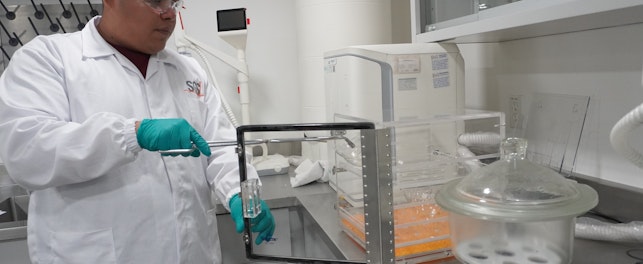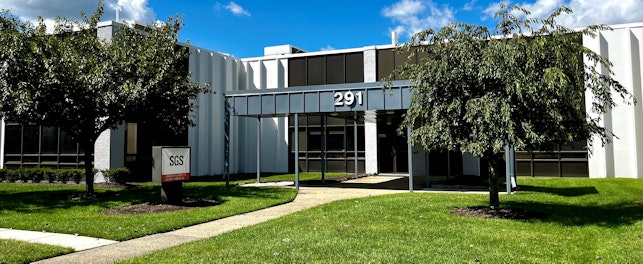When we think of plastic, images of toys, medicine blister packs and food packaging might come to mind. But there is a troubling side: plastics and microplastics polluting our oceans, harming wildlife and causing long-term damage to ecosystems.1 So, what can manufacturers do to lessen the environmental impact of this versatile yet problematic material?
Plastic is undeniably convenient and useful, but its environmental toll can no longer be ignored, and the problem is getting worse. It is estimated that half of all plastic ever made was produced in the last 20 years.2 Back in 1950, global production was 2.3 million tons; that number had risen to 400.3 million tons in 2022, and it is expected to double by 2050.3
Environmental toll
The production of plastic presents numerous challenges. For instance, making just one pound of virgin plastic can require over 20 gallons of water, depending on the polymer, and it is derived from petroleum, a non-renewable resource.
Some plastics release harmful substances after they are discarded into the environment, such as per- and polyfluoroalkyl substances (PFASs), phthalates, bisphenols and alkylphenols. These can threaten the health of both humans and other living organisms.4 Additionally, burning plastic, which is sometimes employed as an informal means of disposal, can release toxic pollutants, such as dioxins and furans, into the atmosphere.5
Wildlife often ingests discarded plastics. These then become trapped, interrupting the digestive system. Microplastics, tiny fragments of plastic, further complicate the issue as they accumulate in the food chain and potentially cause health problems for animals and humans.6
Finally, some of the properties that make plastics so valuable also make them incredibly difficult to decompose. Breakdown estimates vary, with reports stating a plastic bag could take between either 10 to 20 years or 500 to 1,000 years and a plastic bottle between 70 and 450 years.7 During this time, plastics remain a threat to the environment. Ultimately, the rate of biodegradation is affected by the type of plastic and the environment, but that does not detract from the fact that plastics are not easily broken down once discarded.
Global responses
Many governments are stepping up efforts to tackle plastic waste. Countries like France have banned plastic packaging for fruits and vegetables, while Canada has outlawed several categories of single-use plastic (SUP) products.8 The European Union is currently working on quality control rules for plastics that come into contact with food, and California has imposed restrictions on harmful chemicals like PFAS in certain types of food packaging.9
Recycling solution
Complete eradication of plastic is not feasible. Too much has already been produced and its cost and versatility make it difficult to entirely replace. Instead, increasing recycling and using more recycled materials offers a more sustainable solution. The global plastic recycling market, valued at USD 69.4 billion in 2023, is projected to grow to USD 120 billion in 2030, driven by circular economic models, corporate sustainability commitments, rising raw material costs and stricter regulations. At the same time, technological advances are making the process of recycling easier and cheaper.
Recycling has multiple benefits and must be part of any global commitment to reducing plastic use. It decreases the need for virgin plastic, cuts down on problematic waste and encourages innovation. The longer plastic remains in circulation, being reused and recycled, the less pressure we place on diminishing natural resources.
As we work to address plastic pollution, and more broadly to create a circular economy, it is important to note that there is more to this effort than just recycling, but recycling is still essential to enabling a circular economy.
Recycling innovations
Plastic recycling is evolving. The most common form of recycling is mechanical, which has the advantage of being comparatively technologically simple. However, it faces challenges associated with cost, degrading material quality and inconsistent results.
Chemical recycling, also known as advanced recycling, is a newer and more technologically involved process. Techniques such as pyrolysis, gasification and solvolysis are costly but allow for the production of high-quality recycled materials suitable for critical applications like food packaging.10
Finally, enzymatic recycling offers the potential for breaking down even the most difficult polymers, including those used in products and not just packaging.11 Still in its development phase, this method would allow the upcycling of waste to reverse the diminishing returns often associated with recycling.
SGS solutions
We offer a comprehensive suite of services related to recycling, including the certification of recycled content through audit-based programs, as well as rapid qualitative and semi-quantitative testing, support in evaluating alternatives and compliance testing. Our recycled content testing covers various plastics, including recycled polycarbonate (rPC), polyethylene (rPE), polypropylene (rPP), polyethylene terephthalate (rPET) and acrylonitrile butadiene styrene (rABS).
Testing is not utilized to secure the certification of recycled content, but it has several other benefits. These include easier implementation that does not require engagement with all relevant upstream suppliers, making the process quicker and more cost-effective. Overall, this testing can provide an efficient way to vet the recycled content of new materials or check on claims for existing ones.
Once verified in accordance with ISO 14021, materials can display the SGS green mark for recycled content. This label indicates the percentage of recycled content and includes a QR code for buyers to confirm the authenticity of claims.
By embracing recycling innovations and committing to sustainability, manufacturers can reduce plastic's harmful impact on the planet while still benefiting from its versatility.
Learn more about SGS Green Marks.
Enjoyed this article?
Find more news and updates in our Consumer Compact newsletter >
Delivered direct to your inbox
Subscribe to Consumer Compact >
References
2 Plastic pollution facts and information
3 Plastic pollution facts and information & Global plastic production from 1950 to 2022| Statista
4 Chemicals in Plastics - A Technical Report | UNEP - UN Environment Programme
5 Is burning plastic waste a good idea?
6 How bad is plastic for our health? A physician explains | World Economic Forum
7 Degradation Rates of Plastics in the Environment | ACS Sustainable Chemistry & Engineering
8 France: the ban on plastic packaging for fruits and vegetables is back in force & Canada Bans Several Categories of Single-Use Plastic Product
9 EU Consults over Quality Control Rules for Food Contact Plastics & California, USA, Regulates PFAS in Certain Food Packaging and Requires Information for Cookware
10 Chemical Recycling Types: Advantages and Disadvantages | GLG
© SGS Société Générale de Surveillance SA.
2nd Floor Alegria Office Building. 2229 Chino Roces Avenue,
1223,
Makati, Metro Manila, Philippines





